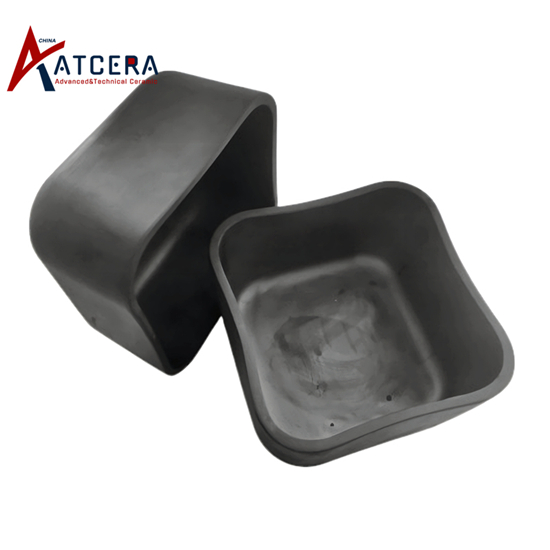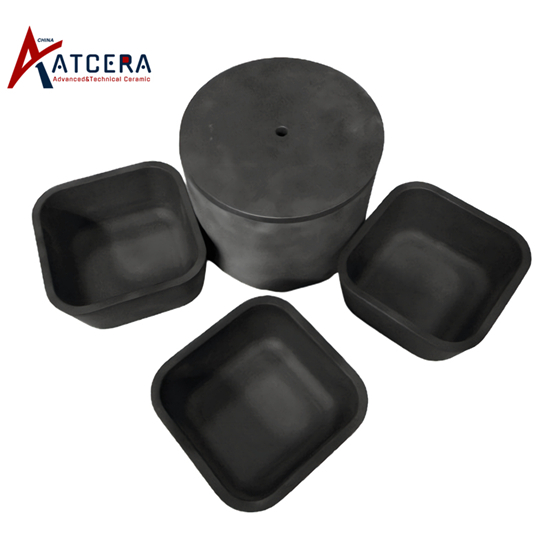In the rapidly evolving world of advanced materials, silicon carbide crucibles have emerged as a game-changer. These technical ceramics, crafted from high-purity, ultra-fine inorganic compounds, offer a unique combination of properties that traditional ceramics cannot match. This article explores the remarkable characteristics, applications, selection criteria, manufacturing process, and success stories of silicon carbide crucibles, providing insights into how they can address the evolving needs of European and American industries.
Characteristics of Silicon Carbide Crucibles
Silicon carbide crucibles exhibit an array of exceptional properties that set them apart. Their high temperature resistance and thermal shock stability ensure durability and reliability in extreme conditions. With a minimal expansion coefficient, they maintain dimensional stability even under significant thermal stress. Furthermore, their resilience against strong acids and alkalis, as well as resistance to spalling and powdering, makes them ideal for handling corrosive materials. The rapid heat conduction of silicon carbide crucibles ensures uniform heating, reducing energy consumption, accelerating production processes, and enhancing overall efficiency.
Application Fields of Silicon Carbide Crucibles
The versatility of silicon carbide crucibles is evident in their widespread applications. In the sintering of lithium-ion battery materials, they enable efficient heat transfer, optimizing the production of batteries for electric vehicles and other applications. Electronic components and magnetic materials also benefit from the uniform heating and superior corrosion resistance of these crucibles. Additionally, silicon carbide crucibles are indispensable in the melting and refining of glass materials, as well as in the semiconductor industry, particularly in the production of silicon carbide semiconductor wafers.

How to Select the Right Silicon Carbide Crucible for Your Project
Choosing the right silicon carbide crucible for your specific project is crucial. Consider factors such as the operating temperature, corrosion resistance requirements, and the size and shape of the materials to be processed. It's also essential to ensure compatibility with your existing equipment and production processes. With the wide range of silicon carbide crucibles available, selecting one that aligns with your needs can optimize efficiency, durability, and overall performance.
Manufacturing Process of Silicon Carbide Crucibles
The manufacturing process of silicon carbide crucibles is a precise art that requires specialized knowledge and expertise. Starting with high-purity, ultra-fine inorganic compounds, the powders are carefully mixed and pressed into the desired shape. The crucibles are then sintered at high temperatures, under strictly controlled conditions, to ensure the formation of a dense, homogeneous material. The resulting crucibles undergo rigorous quality control testing to ensure they meet the strict requirements of technical ceramic applications.

Case Studies and Success Stories of Using Silicon Carbide Crucibles
Numerous case studies and success stories demonstrate the value of silicon carbide crucibles in various industries. For example, a leading battery manufacturer in Europe achieved significant energy savings and productivity improvements by switching to silicon carbide crucibles for the sintering of lithium-ion battery materials. Similarly, a glass manufacturing company in the United States utilized silicon carbide crucibles to optimize the melting and refining process, resulting in higher-quality glass products. These examples illustrate the transformative impact of silicon carbide crucibles in addressing industry-specific challenges and meeting evolving customer demands.
Conclusion
Silicon carbide crucibles represent a significant advancement in technical ceramics, offering a unique combination of properties that traditional ceramics cannot match. Their exceptional characteristics, such as high temperature resistance, thermal shock stability, and corrosion resistance, make them indispensable in various applications, including sintering, metallurgy, casting, glass manufacturing, and semiconductor production. By selecting the right crucible and utilizing the latest manufacturing processes, businesses can unlock the full potential of silicon carbide crucibles, optimizing efficiency, durability, and overall performance. As the demand for advanced materials continues to grow in Europe and the United States, silicon carbide crucibles will play an increasingly critical role in addressing industry-specific challenges and meeting evolving customer needs.


























